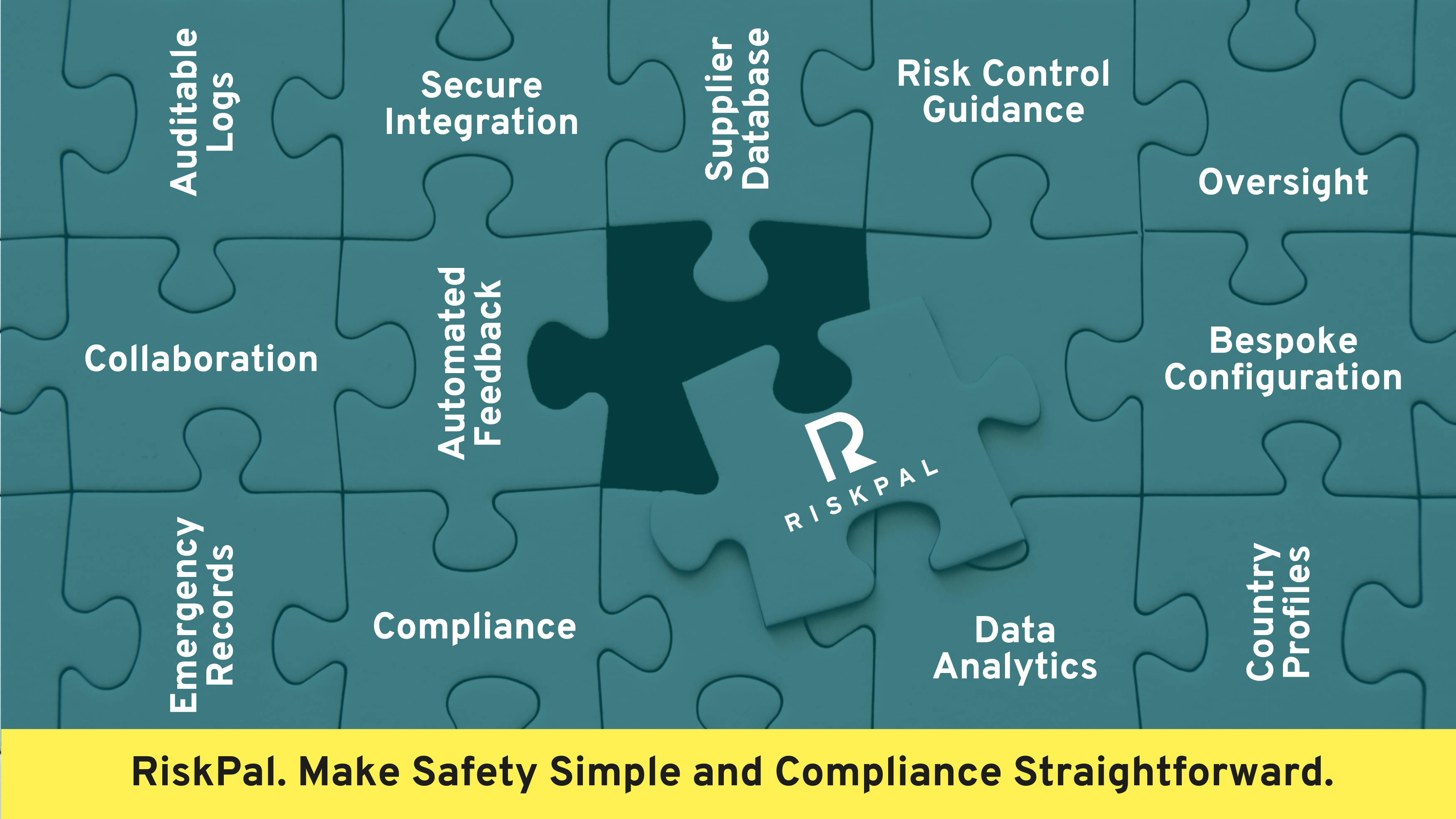RiskPal & Travel Safety: Interview with David Oades
We spoke to one of RiskPal’s High Risk Advisors, David Oades, about his work in the adventure travel industry before he joined the company – and why he has high hopes for our growth in the travel safety risk management space.
Before joining RiskPal, you drove overland expedition trucks across much of Africa, South America and Asia. How did you get into that?
After graduating from university, I worked with some great guys from Sierra Leone, Ghana, Nigeria, Senegal and Côte D’Ivoire. I found their stories about home and their cultures utterly fascinating. My curiosity was heightened further after watching the incredible ‘Sahara’ series with Michael Palin, which made me want to see the countries of West Africa for myself!
At that time independent travel in the region was not straightforward, and in places not particularly safe, so I booked onto a group overland truck trip from the UK all the way down to Cameroon. While in Timbuktu, I stood on the roof of an old fortress as the sun went down over the Sahara, and I decided I wanted to become an overland trip leader. So I applied for the job, obtained my truck licence, and never looked back!
I now own my own small overland company specialising in trips across West Africa.
How do you identify and manage the numerous threats related to driving through an insecure region, or travelling across an extreme environment such as the Sahara desert?
Through what I call RIMC: researching, identifying, monitoring and communication. This approach applies to both long running security threats from militant groups or separatist activity, as well as more localised hazards, such as which roads are more prone to illegal checkpoints or are susceptible to attack from criminal groups.
There are of course multiple environmental issues to contend with constantly, such as the extreme heat and humidity; treacherous roads after heavy rains; and rip currents in the Gulf of Guinea.
Keeping in touch with local contacts and monitoring both local and social media keep us abreast of potential issues ahead, which we relay to the crew via a secure channel. At the same time, the crew relay information back to us that they have sourced from individuals at truck stops or police checkpoints etc.
This two-way flow of information helps us manage the myriad of risks that exist on the road, and to make and/or adjust contingency plans accordingly.
There must be some serious hazards on the road. How do you plan for driving an 18 tonne truck over a wooden log bridge for example?
You plan by learning from others’ mistakes! By working out what went wrong hopefully you won’t end up in the same situation.
The golden rule is to never presume that any wooden bridge is strong enough to support the weight of any vehicle – no matter how sturdy it looks! Always stop the truck and conduct a thorough inspection of the bridge to assess its age, structure and condition. Key considerations include the span of the bridge, any support in the middle, any splits or sign of degradation, thickness of the timer, how close the lengths are to each other, and how far and how well the timber is embedded in to the ground at each end. If necessary you may need to replace individual sections to make the bridge stronger, which can take some time!
I could go into much more detail but you get the general idea.

It’s impossible to predict every eventuality when driving across a continent such as Africa. Are some risks so common & repetitive that you forget they actually are a risk?
This is where a detailed and comprehensive risk assessment proves invaluable – alongside good training of course. By identifying common and repetitive risks with relevant safety mitigation advice, such risks should be prevalent in the mind of the crew at the pre-trip planning stage, which they can then highlight to the passengers from the start.
For example, can you prevent a passenger from falling into a waste water ditch at the side of the road when there is no street lighting? Or hammering a tent peg through a buried electrical cable or water pipe? Or straining their back when lifting the steel sand mats we use to help get the truck unbogged? No you can’t. But you can make them aware of such hazards at the start and discuss what action they should take in order to help reduce the chances of harm.
As an experienced overlander, you know how to mitigate risks and plan for emergencies. So why complete a risk assessment? Is it of much use once the trip commences?
It certainly is. Though we may already be aware of many of the risks, a thorough risk assessment acts as a point of reference and invaluable resource when detailed safety mitigation advice is included. The crew can then highlight the risks and safety advice to the passengers throughout the trip to help reduce the risks.
Remember, overland trips are dynamic in nature and things routinely change. For example, we might receive information that military checkpoints are in place on the road ahead due to a recent security incident. It’s all very well for the crew to say they know what to do at a checkpoint, but chances are they might forget something.
Detailing best practice in the risk assessment shows a duty of care and provides a useful point of reference.

You’ve used RiskPal for your overland company risk assessments. Do you think that RiskPal could be of use to other travel companies?
I really do. I’ve worked for a number of adventure travel companies over the years and most of them complete their risk assessments on Word and Excel documents. These are often stored in lengthy email chains and if you’re lucky a folder on a hard drive, which might not always be accessible. These risk assessments are often a copy-and-paste job, so there are no guarantees that the mitigation advice is up-to-date for the risks identified.
The advantages to using RiskPal are obvious to me:
- Country profiles: You can configure the country profiles with your own information that is relevant to your specific operations and experiences fed back from your team members. Most third party sources won’t tell you key small details, for example, that satellite phones are illegal in India or that you need to have advance archaeological permits to visit ancient sites in Sudan. It’s a great way to keep track of such useful information!
- Risk library: The RiskPal database of risk questions and mitigation advice is vast and easy to navigate. I can easily add in my own niche content that is specific to overlanding. It is a really efficient way to record identified risks and the relevant safety advice – and to keep it up to date in one location rather than across multiple emails and documents!
- Supplier database. We use a number of local guides, mechanics and hotels on the trips. These suppliers can be added to the RiskPal database, which helps us retain knowledge and a log of how each supplier performs via the supplier feedback feature.
- Accessibility: I can login anywhere at any time to view a risk assessment, update safety advice, add a supplier or a new risk question so I don’t forget. And changes I make are immediately visible to my team, ensuring we can share information and work from consistent documentation.
What appealed to you about RiskPal that made you want to join the team?
I’ll be honest – it’s hard to get excited about risk assessments! Many people view them as nothing more than a tedious and at times laborious box ticking exercise. I personally never liked filling out page after page of a Word document template answering the same questions time and time again…
So when Colin (RiskPal Co-Founder) first told me about RiskPal I was intrigued. Seeing the platform in action highlighted how easy, efficient and compliant RiskPal makes the entire risk assessment process. Being able to draw upon a library of risk questions and up-to-date mitigation advice really does save so much time and hassle; and gives you peace of mind.
Risk assessments are playing an increasingly important role across many sectors, and I could see straight away how RiskPal helps make the risk assessment process so much easier.
What feature would you like to see developed that could be useful to an overland trip leader?
A resource library will be a great additional feature. If I can upload and store detailed logistical documents or security reports in RiskPal that will really help.
Acting as a central risk database that can be accessed by both myself and the crew on the road, at any time, would be a really great addition to the RiskPal platform.

Starting to think differently about your risk assessments and safety?
Contact us to find out more about how RiskPal is transforming the risk assessment process.




